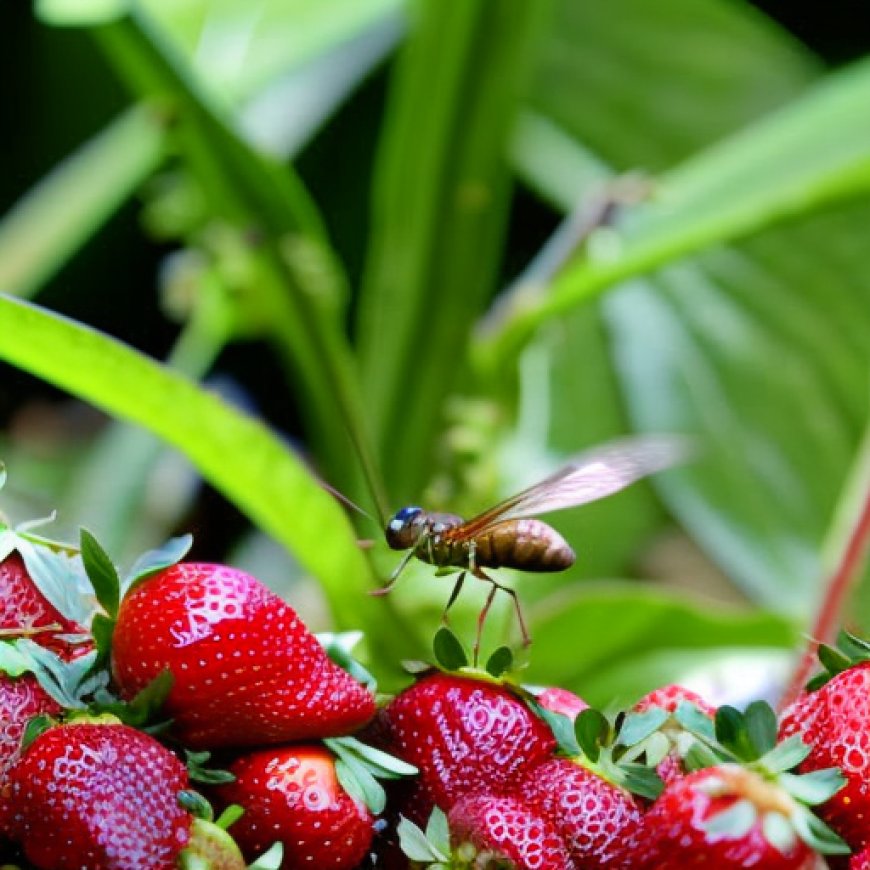Invasive insect threatens Florida strawberry crop as Texas, California brace for peckish pest
Invasive insect threatens Florida strawberry crop as Texas, California brace for peckish pest Fox Weather


PLANT CITY, Fla.
A mild winter short of frost should mean a strawberry harvest bonanza, but one invasive bug threatens the state’s crop.
The chilli thrips gets around, too.
and other states across the southern tier of the U.S. have already reported vegetable, fruit and ornamental damage caused by the voracious insect.
“This is currently a major problem,” Sriyanka Lahiri from the University of Florida‘s Institute of Food and Agricultural Sciences told FOX 13. “They become resistant to these chemicals (pesticides), and their population just explodes in the field, and they’re (farmers) unable to control them for the rest of the season.”
Up to 80% crop loss possible
The pest is a relative newcomer to Florida but is already taking a toll. The sap suckers pierce buds and young leaves, causing them to blacken and sometimes wither and fall off. The plant is stunted, and the fruits and vegetables discolor and sometimes crack too.
America at risk
It is not just strawberries in Florida. The native of Southeast Asia or India devours more than 225 types of fruit, vegetable and ornamental plants. University of Florida researchers warned of a devastating economic impact on bananas, beans, cashews, corn, citrus, cocoa, cotton, eggplants, grapes, mangos, melons, peanuts, peppers, poplar trees, roses, sweet potatoes, tea and tomatoes.
The invaders have been found as far north as Massachusetts, New York and Pennsylvania, according to FOX 13.
“Based on the environment of its occurrence elsewhere, chilli thrips is expected to spread throughout most of California,” stated the UC IPM.
How did they get to the US?
Thrips arrived on produce and other commodity plants, inspectors suspect. The pest continues to spread by drifting on wind currents and hitching rides on existing plants, including in a plant nursery.
“According to USDA-APHIS inspectors, S. dorsalis (chilli thrips) was intercepted approximately 89 times at several ports between 1984 to 2002, mainly from imported plant materials such as cut flowers, fruits, and vegetables,” reported UF.
Sneaky and resistant pest
The bug not only adapts to insecticides, but it hides from them, making the chemicals ineffective.
“It can adapt so rapidly and become resistant to all the chemistries we currently have labeled,” Kenneth Parker of the Florida Strawberry Growers Association told FOX 13. “And the location that it is in, within the plant, like, it will be under the calyx of the berry.”
The calyx is the cap of the berry, and the tiny insects hide under the leafy green sepals. The insects are about the thickness of the tip of a ballpoint pen. Adults can also lay eggs inside the leaf to avoid spraying.
By the time the farmer notices damage, it may be too late.
“When damage is noticed, the thrips may no longer be present, because damage from thrips feeding does not become apparent until later, when plant tissue has expanded and grown,” and possibly the next growing season,” UC IPM explained.
New research is looking into importing predatory mites to control the invaders and breeding thrips-resistant varieties of strawberries.
Home gardeners may also notice damage to their plants.
SDGs, Targets, and Indicators Analysis
1. Which SDGs are addressed or connected to the issues highlighted in the article?
- SDG 2: Zero Hunger – The article discusses the potential loss of crops, including strawberries, which could have a significant impact on food security and access to nutritious food.
- SDG 15: Life on Land – The article highlights the threat posed by the chilli thrips to various plants, including fruits, vegetables, and ornamental plants, which can disrupt ecosystems and biodiversity.
2. What specific targets under those SDGs can be identified based on the article’s content?
- SDG 2.4: By 2030, ensure sustainable food production systems and implement resilient agricultural practices that increase productivity and production, that help maintain ecosystems, that strengthen capacity for adaptation to climate change, extreme weather, drought, flooding and other disasters, and that progressively improve land and soil quality.
- SDG 15.1: By 2020, ensure the conservation, restoration and sustainable use of terrestrial and inland freshwater ecosystems and their services, in particular forests, wetlands, mountains and drylands, in line with obligations under international agreements.
3. Are there any indicators mentioned or implied in the article that can be used to measure progress towards the identified targets?
- Indicator for SDG 2.4: Proportion of agricultural area under productive and sustainable agriculture.
- Indicator for SDG 15.1: Proportion of important sites for terrestrial and freshwater biodiversity that are covered by protected areas.
Table: SDGs, Targets, and Indicators
| SDGs | Targets | Indicators |
|---|---|---|
| SDG 2: Zero Hunger | 2.4: By 2030, ensure sustainable food production systems and implement resilient agricultural practices that increase productivity and production, that help maintain ecosystems, that strengthen capacity for adaptation to climate change, extreme weather, drought, flooding and other disasters, and that progressively improve land and soil quality. | Proportion of agricultural area under productive and sustainable agriculture. |
| SDG 15: Life on Land | 15.1: By 2020, ensure the conservation, restoration and sustainable use of terrestrial and inland freshwater ecosystems and their services, in particular forests, wetlands, mountains and drylands, in line with obligations under international agreements. | Proportion of important sites for terrestrial and freshwater biodiversity that are covered by protected areas. |
Behold! This splendid article springs forth from the wellspring of knowledge, shaped by a wondrous proprietary AI technology that delved into a vast ocean of data, illuminating the path towards the Sustainable Development Goals. Remember that all rights are reserved by SDG Investors LLC, empowering us to champion progress together.
Source: foxweather.com

Join us, as fellow seekers of change, on a transformative journey at https://sdgtalks.ai/welcome, where you can become a member and actively contribute to shaping a brighter future.







